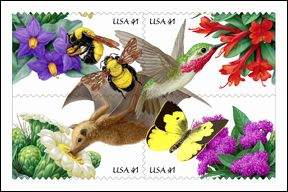California is synonymous with fruits and vegetables. An omnivorous pest would be a terrible thing. Cue the light brown apple moth, Epiphyas postvittana. LBAM, as we’re being familiar, would be better known as LBEM, the light brown everything moth, according to one expert quoted in the New York Times, because its larvae munch on just about anything green, including the grape vines of Napa county where it has just been found in large numbers. Omnivory suggests that diversity is unlikely to be much protection.
Then there’s potato wart 1, caused by the fungus Synchytrium endobioticum. It is so long-lasting in the soil that even though the direct economic losses are small, it causes enormous indirect losses as farmers are prevented from growing potatoes, according to a (long and thorough) story from the American Phytopathological Society. It’s even on the Federal Bioterrorism list for agricultural plant pathogens. Diversity might help there, if resistance can be found.
 June 29 will be the day to buy this new set of pollinator stamps — if you are in the US. They celebrate National Pollinator Week, and I guess they were agreed far too long ago to feature hives emptied by Colony Collapse Disorder. I really like the symbolism of the design: “The designs are arranged in two alternate blocks that fit together like interlocking puzzles. In one block, the pollinators form a central starburst. In the other, the flowers are arranged in the center.” For details of the animals and flowers, see this
June 29 will be the day to buy this new set of pollinator stamps — if you are in the US. They celebrate National Pollinator Week, and I guess they were agreed far too long ago to feature hives emptied by Colony Collapse Disorder. I really like the symbolism of the design: “The designs are arranged in two alternate blocks that fit together like interlocking puzzles. In one block, the pollinators form a central starburst. In the other, the flowers are arranged in the center.” For details of the animals and flowers, see this